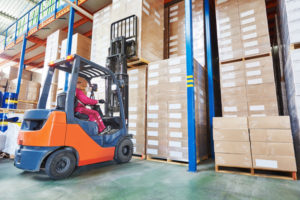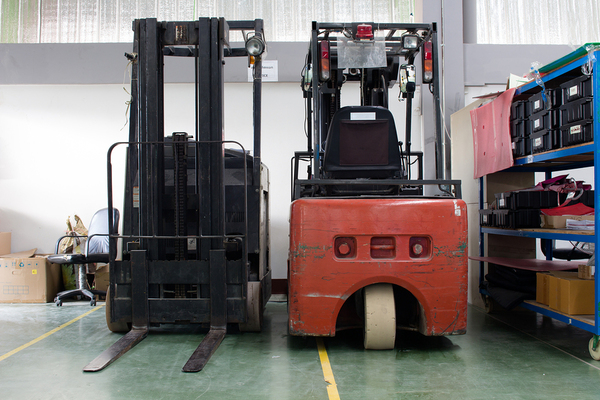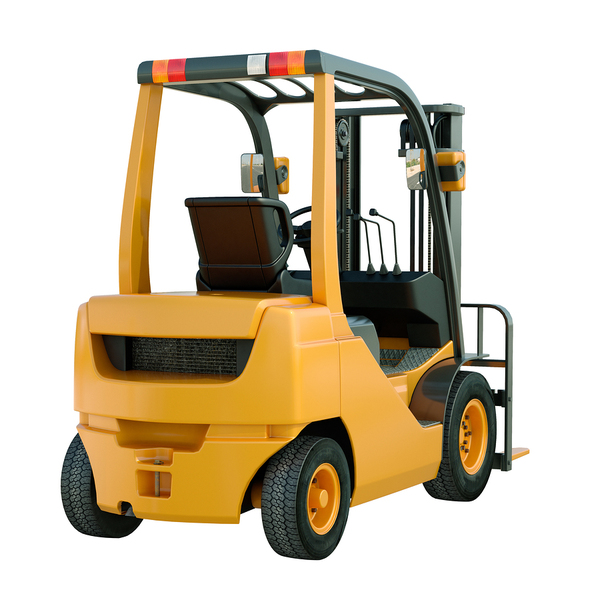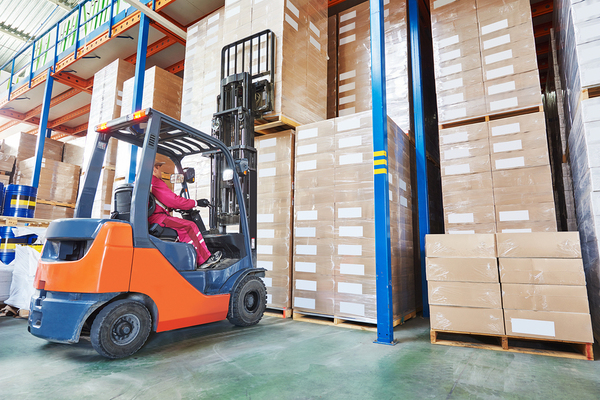4 Forklift Safety Tips For the Workplace
Most accidents in the workplace can be avoided by implementing proper forklift safety and training procedures. Yet each year in the US, according to OSHA, there are roughly 97,000 accidents involving forklifts with about 37% of these being serious accidents or fatalities. If you assume one accident per forklift, about 11% of the 855,900 forklifts in use in the U.S. are involved in an accident each year. With the same assumption, 90% will be involved in an accident of some kind over the 8-year life of the average forklift. Results from other countries display similar patterns. Forklift safety simply needs more attention when accidents involving vehicles tipping over or crushing someone between the forklift and either another vehicle or surface are largely preventable with training, safe operation, and awareness of some basic guidelines.

Forklifts are vehicles designed to lift, transfer and stack loads, often in confined spaces. This requires them to be compact, which in turn raises the center of gravity. Forklifts are therefore prone to tipping over unless used safely. Forklifts steer by the rear wheels so operators must always keep the forklift's center of gravity inside the "stability triangle" which is formed by the midpoint of the rear axle and the two front wheels. Tip overs occur when the center of gravity shifts outside the "stability triangle". The center of gravity can be shifted by:
- Traveling with an elevated load
- Driving too fast when turning the forklift
- Operating the forklift on a steep incline
- Carrying too heavy a load (one that weighs more than the forklift)
As a result, understanding the safe way to move loads and achieve proper load balance is critical to operating a forklift safely.
1. Loads and Load Handling
- Know the maximum load capacity listed on your forklift's data plate
- Know the Load Center (distance from face of the forks to midpoint of load) specified for your forklift
- If you are carrying multiple pieces in your load, the heaviest needs to be nearest the face of the forks. -Make sure your load is properly stacked and stable before you move it
- Tilt the forks toward you if necessary to shift the center of gravity backwards. Never tilt the forks forward when they are raised unless you are depositing a load
- Never raise your load more than 8 inches while transporting it, and tilt it backwards
- If a load blocks your view, travel in reverse
- Adjust your forks as necessary when carrying wide loads
2. Safe Operation - Movement and Speed
- Always start and stop smoothly
- Keep your speed to a safe, manageable level for conditions
- If you must take a sharp turn with a raised load, slow down
- Never raise your load more than 8 inches while transporting it, and tilt it backwards
- If your load is long, or wide, move slowly and watch for obstructions and pedestrians
- When driving an empty forklift, reverse your way up inclines and drive forward down inclines to make sure the "stability triangle" remains in place
- Loaded forklifts need to move forward up inclines, and reverse down inclines to make sure the "stability triangle" remains in place
- NEVER turn on an incline or ramp
- Avoid driving on unsafe surfaces like mud, ice or sand
- Park your forklift in a safe, flat place and turn it off if you move more than 25 feet away
- If your forklift starts to tip over, stay inside. DON'T JUMP. This is the number one source of forklift fatalities
3. Forklift Maintenance For Increased Safety
Taking proper care of your equipment will help keep your team safe. If you buy a used forklift be sure to get a thorough inspection by a certified mechanic before operating it. Inspect your forklift daily before use, including:
- Brakes (including parking brake)
- Steering
- Horn
- Uprights, including chains, hydraulic hoses and controls, forks and masts
- Tires
- Engine hour meter
- Leaks
- Fuel/oil, gas or battery levels

If you find chain slack it can mean you have a problem with the lift mechanism that needs attention from a professional forklift mechanic. Always complete your daily operator's report at the end of your shift so that everyone is on the same page.
4. Safe Forklift Workplaces
- Avoid driving on uneven or unsafe surfaces like mud, ice or sand
- Avoid driving in areas with potholes or rough surfaces. If unavoidable, approach slowly at a 30-degree angle
- Make sure the area above your work space is clear of obstructions like beams and cables
- Only use elevators that can accommodate the weight of both your forklift and your load
- When moving from a loading dock to a trailer, make sure the trailer floor can support the weight of your forklift and your load, that the trailers wheels are chocked, and that ramps or dock plates are securely anchored
- Approaching intersections or when backing up, slow down, look for pedestrians and sound your horn or use your backup alarm
- Explain and enforce strict rules against horseplay with forklifts in the work area - NO EXCEPTIONS
- Park your forklift in a safe, flat place with the forks lowered and the brakes set. Turn it off if you move more than 25 feet away
Forklifts, properly used by trained operators, will make load handling faster and more efficient. Only knowledgeable operators should ever be allowed to operate a forklift. Here is a good forklift safety overview for reference. If you need help choosing between a new or used forklift, we can help you pick the best lift truck as a great price.


